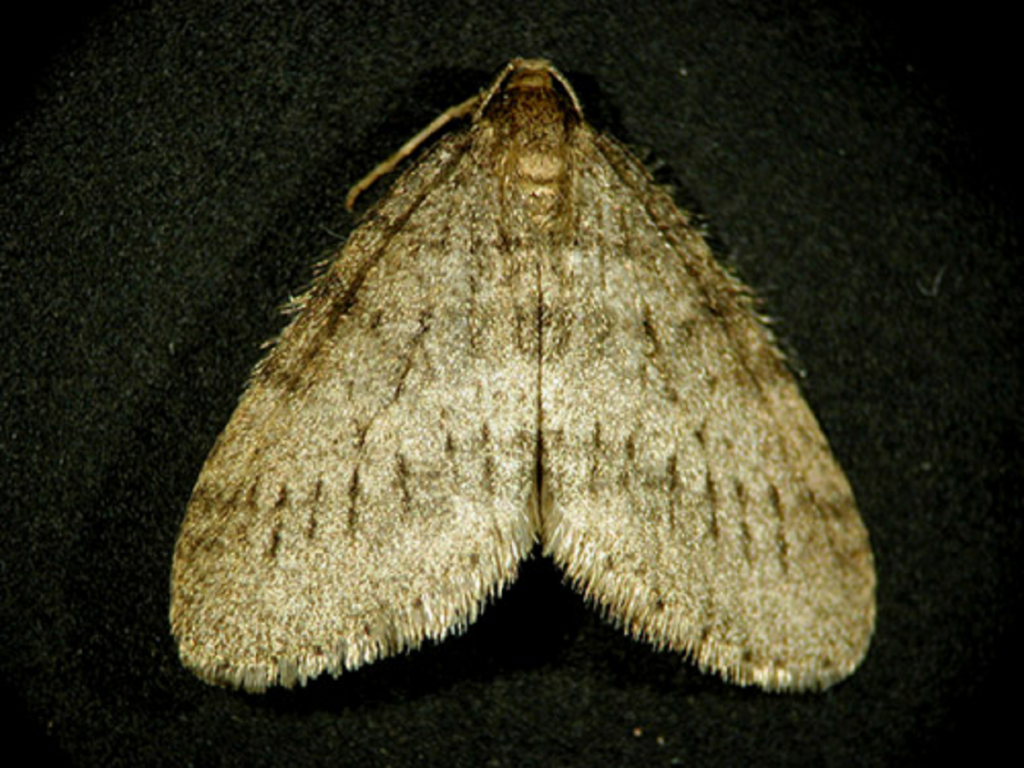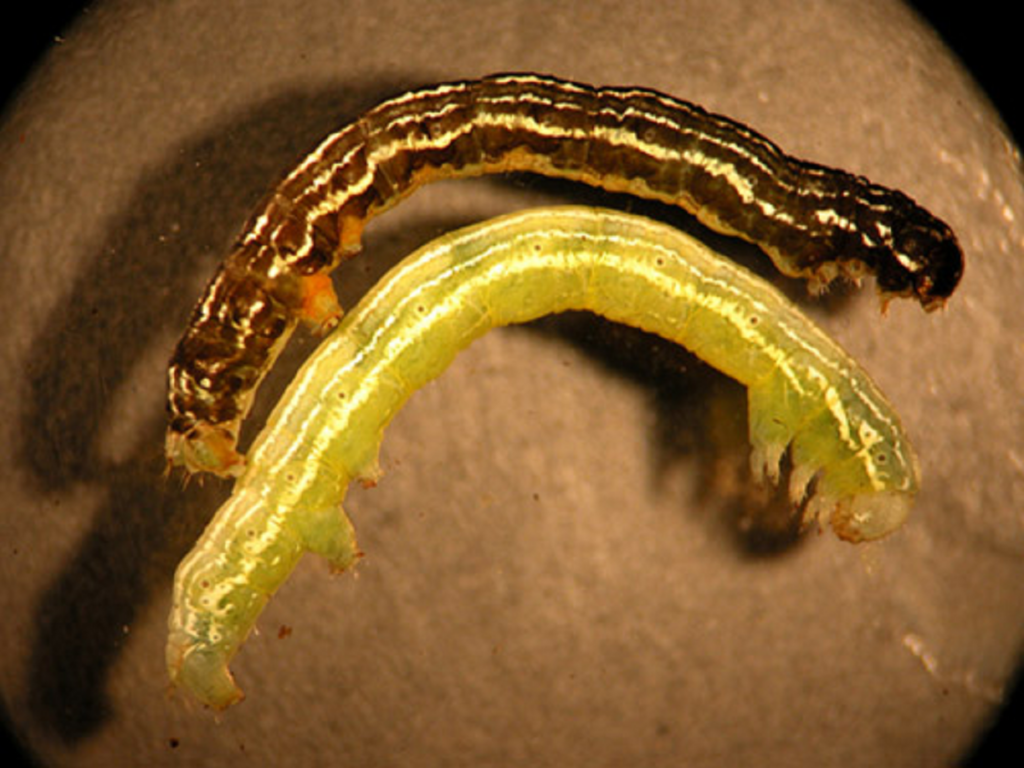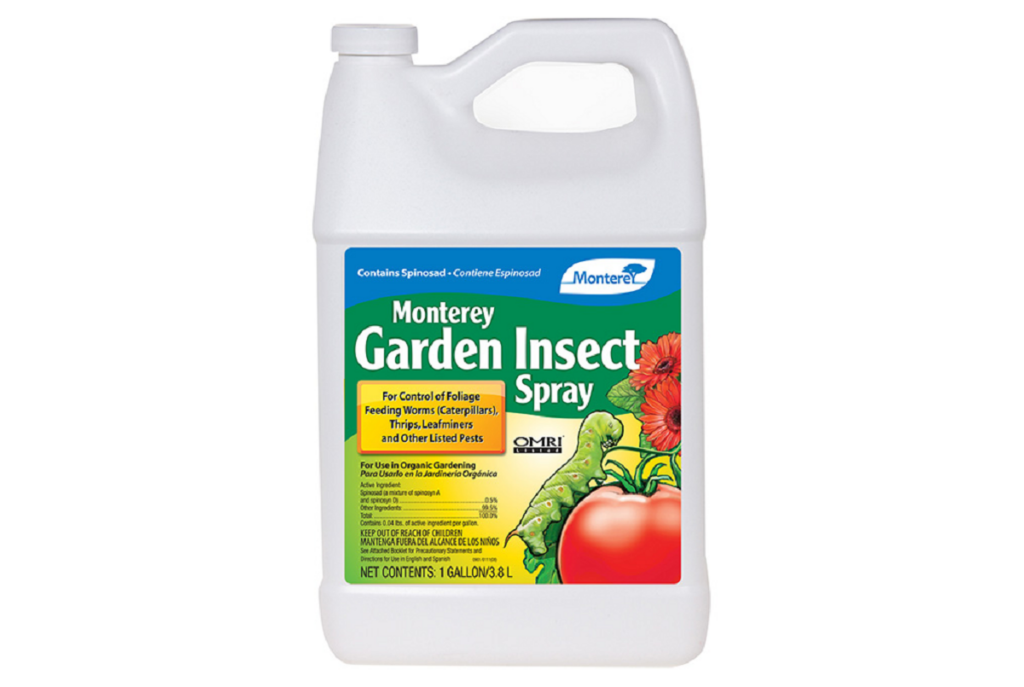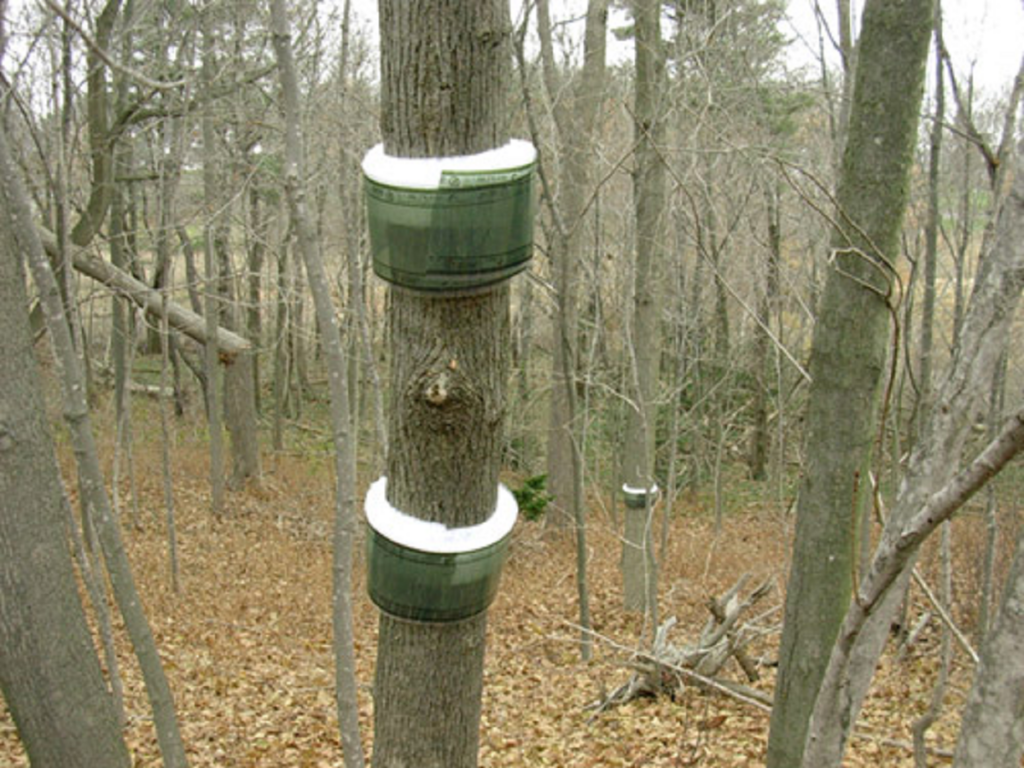Plants get sick too because of microbes and insect pests. They invade them. In the case of insect pests, they steal plants’ food and kill them. So, for example, winter moth infestation kills the plant.
What is Winter Moths?
Winter moths are invasive insect pests of both indoor and outdoor plants. Their origin is from Europe and Western Asia. However, they were first found in America in 1930. Winter moths are members of the insect order Lepidoptera. They voraciously feed on trees (tree trunks, leaf buds, and flower buds).
In houseplants, the female winter moths lay eggs in the soil, and then winter moth larvae aggressively feed on the leaves. Winter moth caterpillars or larvae harm the leaves, flowers buds, and leaf buds. Young larvae of winter moths are more damaging because they shred the leaves.

What Does the Winter Moth Look like?
Do Moths Lay Eggs in Winter?
The Life Cycle Of Winter Moths
The life cycle of winter moths is a four-stage process that involves eggs, larvae, or caterpillars, pupae, and adults. The winter moth’s lifecycle starts in mid-November when an adult male or female winter moth emerges from pupae.
The male winter moth is 0.7-0.9 inches long and light brown to tan in color. Male moths have wings, and all their four attachments have elongated scales that give a hairy appearance. The male winter moth is attracted to light and always present near lamps or lights (indoor or outdoor).

While female moths are 0.3 inches long, wingless, and of a gray color, the female moths cannot fly; therefore, they release sex pheromones to attract males. And they are usually found at the tree base. Female winter moths lay eggs in potting soil or deposit their eggs in the ground in houseplants. The egg count is 150-350 and not visible to the naked eye. The adult male then dies and eggs over winter.
In March, when the temperature is around 55℉, the eggs hatch, emerges tiny larvae or pale green caterpillars. The newly hatched caterpillars migrate towards leaves and turn into aggressive leaf eaters. As the pale green caterpillars grew, they turned green with blackish heads.

What Damage Do Winter Moths Do?
The adult winter moths (male and female) do not cause much damage to plants. But their larvae cause much damage to plants. Winter moth larvae are a defoliator as they feed on the leaf buds and flower buds. Their damage looks like bullet shots in heavily infested trees and indoor plant leaves.
The continuous feeding of winter moth caterpillars on leaves stresses the plant or kills it. Winter moth populations also cause defoliation, enhancing the attack of secondary pests.

How Do You Control Winter Moth?
One of the easiest and effective ways to control winter moths is prevention. To prevent the damage of moth species, it is wise to damage or suffocate the winter moth eggs before hatching.
Because when winter moth eggs hatch, the young larvae or caterpillars start feeding on young leaves very early. To control the caterpillars, treat the eggs with horticultural oils in early spring. It will prevent egg hatching.
The oils should be applied in late winter or early spring to suffocate the eggs. The optimum temperature for oil applications is 45℉. This temperature range will prevent plants from injury—phytotoxicity.
Spraying Plants With Spinosad
Another way to control the winter moth larvae is Spinosad, a derivative of Bacillus thuringiensis bacterium.
The Spinosad works as an insecticidal and hijacks caterpillar’s nervous system, killing them and protecting indoor plants from leaf damage. In addition, and more interestingly, Spinosad sprays effectively work on caterpillars of all ages.

Applications of Bacillus Thuringiensis
This bacterium kills first instar larvae. Therefore, it is most effective through ingestion. Once inside the caterpillar gut, the bacterium rapidly multiplies and produces toxins that kill them. In outdoor plants, the early applications of bacterium on leaf buds prevent leaf damage because the ingestion of Bacillus thuringiensis stops the larvae from feeding.
Applications of Chemicals
The most effective chemical control product is pyrethroids to control winter moths. The pyrethroid dilutions should be applied at egg hatch to kill young larvae rapidly.
The applications of the pyrethroid should be mild and monthly. And it should not be used at the bloom or flowering stage.
For the rapid action against the winter moth caterpillar, the pyrethroid chemicals are effective. These chemicals have a “knockdown” effect by rapidly killing the target organism (free-living caterpillars). The pyrethroids work on larvae either through direct contact or ingestion.
However, the one drawback of these chemicals is their harsh effects on natural predators. The second drawback of chemical insecticides is their persistent presence in the environment.
Treatment of Winter Moth Pupae in Soil
The caterpillars of the winter moth fall to the ground to pupate in the soil. At this stage, there is no best control method is available. So, it is wiser to manage winter moth pupae through biological control. The biocontrol agents for winter moth pupae are ground beetles and wasps.
These two organisms can help in the control of winter moths. The wasps and ground beetles eat the pupated winter moth (reside in soil) before the adults emerge from pupae in late November.
The biological control method prevents the spread of the winter moth from one place to another. Because the winter moth pupae live within the soil during winter. And the control at this stage helps in the prevention of their dispersal over other places or regions.
Insect Growth Regulators for the Winter Moth Control
Insect growth regulators or IGRs—are the chemical active ingredients that imitate the hormones of young insects and disrupt their normal body functions. Such as in the winter moth, the growth regulators prevent the young caterpillars from molting and killing them.
Molting—is a growth process in insects in which they shed their exoskeleton to grow from one form to another.
Tebufenozide is an insect growth regulator which copies the winter moth ecdysone hormone and prevents it from molting.
This chemical is most effective in the management of caterpillars and does not have environmental hazard issues. The tebufenozide serves an important function in integrated pest management approaches.
Treatment for Adult Winter Moth
The adult winter moth does not feed at this stage. So, there is no damage to host plants by the adult winter moth.
That’s why there are no control measures for the adult winter moth at this stage. However, there should be control measures taken to prevent the damage of climbing adult females and caterpillars.
In order to prevent the damage of climbing females and caterpillars, the bands should be used. These bands work as a barrier and stop the climbing female and caterpillars. And this process is known as “tree banding”. Tree bands are of heavyweight paper or plastic material.

Tree banding is the most effective approach in the management of adult moth species and caterpillars. These cards also monitor the winter moth egg hatch in spring and prevent the crawling of larvae. During peak winter moth populations in late October, the sticky tree bands are filled with adult moths within hours.
In the case of the female moths, when they climb up to the trees and come across barriers. They lay their eggs below the bands or under tree barks. These eggs can easily be seen by a magnifying lens. The eggs appear in circle forms with a pale color on them.
Frequently Asked Questions
When Should I Spray for Winter Moths?
In early spring, the winter moth caterpillar emerges from eggs and feeds on leaves. They feed on leaves, buds, and flowers. The constant feeding of winter moth caterpillar causes leaf defoliation, weakening the plants.
Therefore managing winter moth caterpillars in early stages (early spring) benefits the aesthetics of gardens and indoor plants. The horticultural oil spray suffocates the larvae inside eggs. So, the best time for oil sprays is in early spring.
How do You Prevent Winter Moth from Spreading?
There are many ways by which winter moths are controlled. Such as the application of oil sprays, biological control, and chemical sprays. However, the time of treatment applications is crucial in controlling winter moths. The early winter is for their egg overwintering.
And late March and early April involve egg hatching in winter moth. Therefore, it is best to prevent the hatching of eggs in winter moths to cease their spread. The application of horticultural oils suffocates the eggs (kill eggs) of the winter moth and kills larvae inside eggs.
While the older larvae, the Spinosad sprays kill them before turning into pupae.
What Winter Moth Do to Trees?
The most visible infestation of winter moths on host trees is the defoliation of leaves. The falling of leaves of host trees makes them weak and susceptible to other pests. Also, the winter moth larvae feeding make bullet shots in leaves and sometimes consume all of them. A tree without leaves is unable to prepare or process its food.
What Eats Winter Moths?
The natural eater of winter moths are spiders, beetles. They eat them in their cocoons. Even birds and bats also feed on winter moths at all stages of their life. While the beetles and spiders can play important role in their management as biological control.
What is the Appearance of Winter Moths?
Adult moths (male) are grayish and brown. The female is wingless and can not fly. And the female appears more like a spider due to its long legs.
The larvae are of light green in appearance when young and they grew older changes into a dark green with a black head. The older larvae feed on leaves. Thus, making them weak and falling to the ground.
What Do Moths Eat?
The adult moth species do not cause much harm to their host plants. But winter moth caterpillars eat leaves, developing fruits, and blossoms. Their feeding behavior makes holes in leaves and weaker to carry out photosynthesis. Thus, making plants susceptible to other pests.
How Do I Get Rid of Winter Moth Caterpillars?
One of the best methods is to repel or kill the winter moth caterpillars is the use of fish oil and the use of regular dish soap. To kill the green winter moth caterpillars, mix half a liter of warm water with dish soap. Spray this solution on infested plants or houseplants. In order to get rapid management, apply regularly or just handpick them and place them in solution (warm water+dish soap).
This serves as the best approach to get rid of unpleasant caterpillars.
What Does Winter Moth Turn into?
After completing their molting process, they turn into the adult winter moth. That has a head, thorax, and abdomen region. The thorax and abdomen region bears have three pairs of legs and two pairs of wings. The moths and butterflies both undergo complete metamorphosis and belong to the same order Lepidoptera.
While the adult male moth has wings and the female is wingless.
Sources for Further Reading
- Childs, Robert. “Landscape: Winter Moth Identification & Management | Center for Agriculture, Food, and the Environment at UMass Amherst.” Center for Agriculture, Food, and the Environment, UMass Extension Landscape, Nursery, and Urban Forestry Program, 6 Mar. 2015, https://ag.umass.edu/landscape/fact-sheets/winter-moth-identification-management
- Winter moth – Integrated Pest Management. (n.d.). Integrated Pest Management. Retrieved December 29, 2021, from https://www.canr.msu.edu/ipm/diseases/winter_moth
- Wild, A. (2019, March 1). 5 Things You Need to Know About the Winter Moth — Boston Tree Preservation. Boston Tree Preservation; Boston Tree Preservation. https://www.bostontreepreservation.com/blog/2019/2/22/5-things-you-need-to-know-about-the-winter-moth
Read the Effective Ways To Get Rid Of Russet Mites On Houseplants
Check out What are the Best Practices to Get Rid of Thrips on Houseplants? and What are the Effective Ways to Fix Nitrogen Toxicity in Houseplants?







